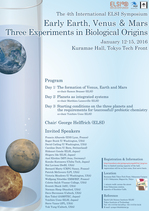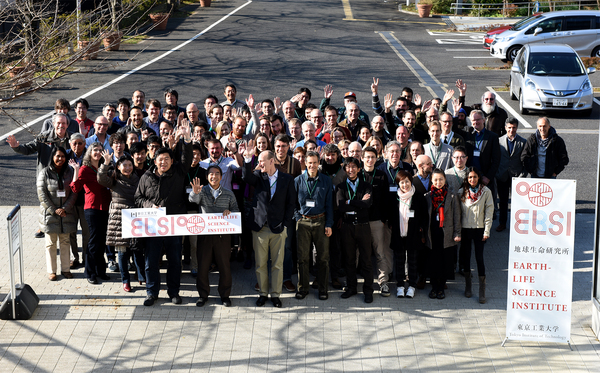ELSI Blog
124 4th ELSI International Symposium
 January 15 marked the end of ELSI's 4th international symposium. Every year the symposium offers the chance to gather invited speakers from abroad and Japan to tackle some of the most pressing issues related to the science at ELSI. The symposium itself provides the basis for discussion while guests are encouraged to extend their stays beyond the official dates to explore some ideas in more details during the following weeks.
January 15 marked the end of ELSI's 4th international symposium. Every year the symposium offers the chance to gather invited speakers from abroad and Japan to tackle some of the most pressing issues related to the science at ELSI. The symposium itself provides the basis for discussion while guests are encouraged to extend their stays beyond the official dates to explore some ideas in more details during the following weeks.
This year's symposium investigated how comparative planetary science can help our understanding of early Earth and the origins of life. Indeed we have only one example of a biotic planet, but we can use Mars and Venus as examples of failed origins of life. This non-result, and more broadly the understanding of planetary diversity, can provide the context necessary to pinpoint crucial differences during early Earth evolution as compared to other terrestrial bodies.
During the first day the emphasis was on planetary formation and how critical elements are delivered to them. The field is at an exciting point where accepted scenarios are changing fast, and it is unclear if today's assumptions will resist tomorrow's observations. In the second day speakers presented what we know about planetary diversity, and how planets behave as systems with biogeochemical cycles feeding back on global evolution. Finally the third day was devoted to the different forms of chemical disequilibria, how they form and their importance for life.
The meeting left many opportunities for discussions for which the different sessions acted as seeds. This culminated in a wrap-up debate about why the Earth succeeded where other planets have failed. It would be imprudent to try and summarize the discussion here in a few lines, but we will soon put up a good summary of the whole meeting in the symposium archive pages (http://old.elsi.jp/en/research/activities/symposium/archive.html). This was also the first ELSI symposium to be streamed live, taking advantage of ELSI support to SAGANet (http://saganet.org). This will be archived once the video editing is finished so please check back to our symposium pages or to SAGANet.











